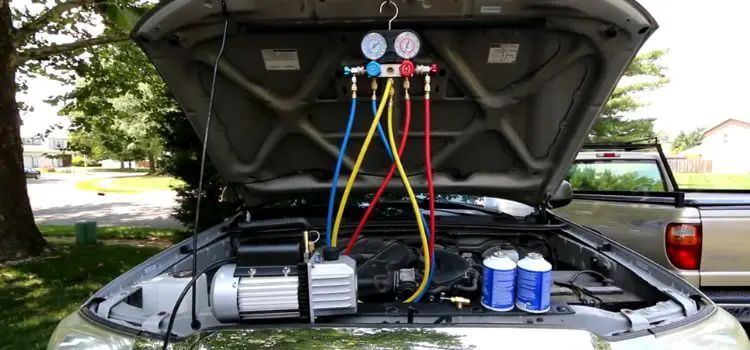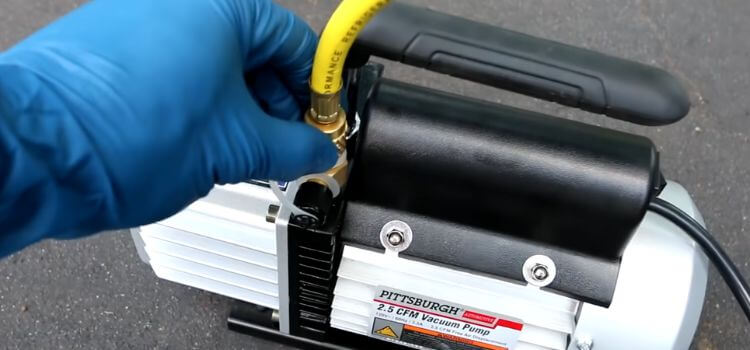As an Amazon Associate, I earn from qualifying purchases.
If you’ve ever had issues with your car’s air conditioning system, you know how frustrating it can be. One common step in troubleshooting AC problems is pulling a vacuum on the system to abolish moisture and air. But how long should you pull a vacuum on your car’s AC system? In this post, we’ll dive into the details and answer this common question. So, to keep your cool while driving, keep reading to find the best practices for pulling a vacuum on your car’s AC system.
Actuate the Size of the car’s AC System.

Before pulling a vacuum on your electrical AC system, it’s necessary to determine its size. This will help you apprehend how long it will take to pull the vacuum. The size of the AC system can vary depending on the make and model of the car, so it’s essential to refer to the manufacturer’s specifications or consult a professional if you need clarification.
Gather the Necessary Equipment.
You must gather the necessary equipment before vacuuming your car’s AC system. This includes a vacuum pump, a set of manifold gauges, and a vacuum hose with a valve core removal tool. These tools will help you to properly vacuum the system and remove any moisture and air that may be present. The proper equipment ensures that the job is done perfectly and efficiently. Once you have all the necessary accessories, you can pull a vacuum on your car’s AC system.
Relate the Vacuum Pump to the AC System.

Once you have all the necessary accessories, you can pull a vacuum on your car’s AC system. Start by associating the vacuum pump with the low-pressure port on the AC system. Confirm the pump is turned off before associating it to the port. Once connected, please turn on the pump and let it run for the time needed to pull the vacuum. This will help remove moisture and air from the system, ensuring it functions properly.
Monitor the Vacuum Gauge.
While the pump is running, assure that the correct vacuum level is perfect; if the gauge shows that the vacuum level is not reaching the specified amount, there may be a leak in the system that needs to be addressed. Monitoring the indicator throughout the process ensures the vacuum is pulled correctly.
Please turn off the Vacuum Pump and disengage it from the AC System.
Once the specified time has passed and the vacuum level has been achieved, it’s time to turn off the pump. Please do this before disconnecting it from the AC system to avoid mishaps. Once the pump is turned off, disengage it from the low-pressure port on the AC system. Be sure to handle the pump and hoses carefully to avoid any damage. With the pump disconnected, the AC system should now be evacuated appropriately and ready for the next steps in the maintenance or repair process. Constantly follow the manufacturer’s guidelines and recommendations when using a vacuum pump for AC systems to assure safe and efficient operation.
Conclusion
In conclusion, following the manufacturer’s guidelines and recommendations is essential when pulling a vacuum on a car AC system. It would help if you pulled a vacuum for at least 30-45 minutes to assure that all moisture and air are detached from the system. This will help prevent any potential issues with your AC system in the future and ensure that it functions properly. It’s consistently best to consult an efficient mechanic or AC technician for specific advice on your car’s AC system.
As an Amazon Associate, I earn from qualifying purchases.
Leave a Reply